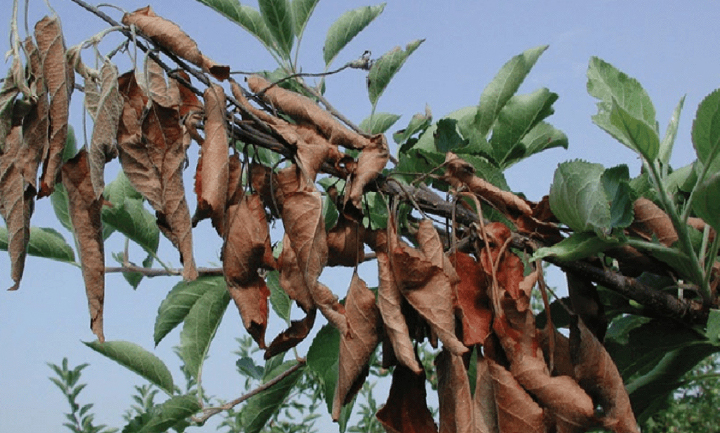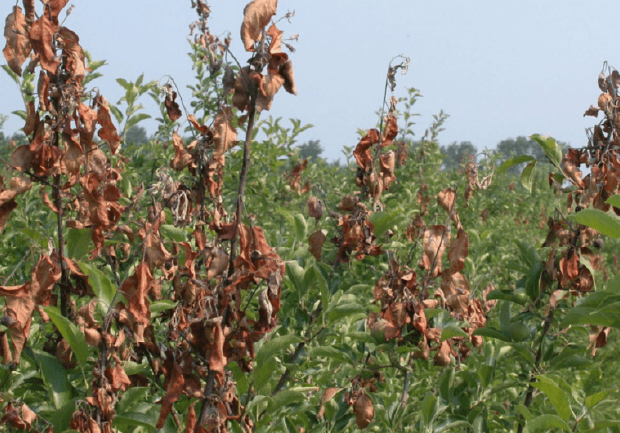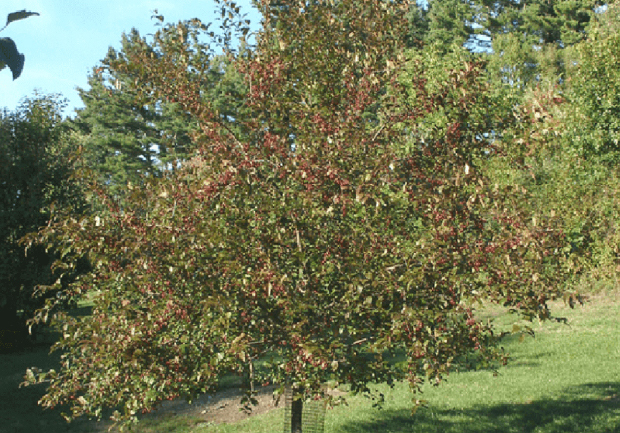
Fire blight is a destructive plant disease that results in wilting and death of plant parts. Severe fire blight can kill an entire tree. In Minnesota, it’s most commonly found in Crabapple and Apple, Hawthorn, Serviceberry, and Mountain Ash trees.
Bacteria is transmitted by insects and moist air currents to young green tissue, especially after a storm that causes physical damage to shoots. On warm, wet days infected tree parts ooze bacteria-filled honey or cream-colored liquid, which is attractive to insects.
If the bacteria advance into woody branches, cankers will develop. Bark may appear sunken or cracked, and reddish-brown discoloration will be visible in the xylem.


Fire blight can be difficult to spot for the common homeowner. It can co-occur with apple scab and look like animal feeding or hail damage to a tree. When a tree is infected, the shoots will bend downward, forming a shepherd’s crook. This can create a “scorched” appearance on shoots and branches, hence the name.
To prevent a fire blight infection, prune trees to remove the infected branches before it can spread to the rest of the tree. All infected branches must be removed and destroyed. This will stop the infection from moving further into the tree and prevent the bacteria from spreading to other trees.
The best time of year to do this is in February or March, when the tree and bacteria are dormant. Infected branches should be pruned back eight inches closer to the trunk than the apparent infection. Between cuts, disinfect pruning tools with a 10% bleach solution.
If new infections develop during the growing season, remove those branches with the same procedure, preferably during cool, dry weather. If the infection is caught and removed before the bacteria have entered the trunk, there is a very good chance of survival. The tree should be monitored to ensure no new symptoms develop.
If the infection has entered the trunk, the tree and stump should be removed as it cannot be cured. The infected tree will continue to remain as a source of bacteria to infect other trees. If you believe your tree is at risk of developing fire blight disease, contact Vineland Tree Care for a full consultation and free estimate.
From questions to estimate requests, contact us about your residential or commercial project.